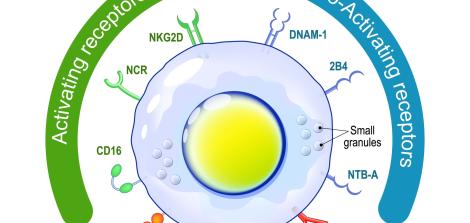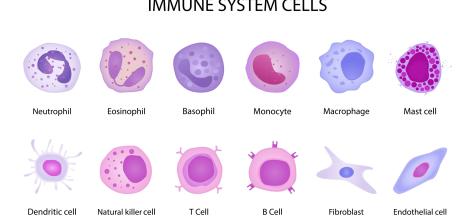CRISPECTOR: A Computational Tool That Is a Genetic Game-Changer

The field of genetic editing has progressed tremendously in recent years, following the advances in laboratory and computational technologies. One of the revolutionary technologies that have been developed is CRISPR - a tool that allows researchers to edit the genetic code itself in order to repair defective genes that cause serious diseases. The new opportunities for applying CRISPR technology are accompanied by challenges posed by its application, first and foremost the control of efficacy and safety-mainly to make sure that no DNA sections are edited other than the targeted section.
Researchers from the Nanotechnology Laboratory led by Dr. Ayal Hendel from the Faculty of Life Sciences at Bar-Ilan University, in collaboration with researchers from the field of machine learning and data sciences led by Prof. Zohar Yakhini from Reichman University, have developed a new computational tool for analyzing the results of CRISPR-based genetic editing. This tool, known as CRISPECTOR, makes it possible to evaluate the efficacy and safety of CRISPR-technology-based treatments, thereby overcoming one of the major challenges in the application of this technology. This development paves the way toward new CRISPER-based treatments that will be safer and more effective.
Background - CRISPR-based genetic editing
CRISPR technology allows researchers to edit and cut genes to introduce changes at specific points in the DNA sequence, thereby altering the function of those genes.
The CRISPR system is based on a natural mechanism that bacteria use to protect themselves from viruses. This system has two components – an RNA code, which is a sequence of nucleic acids designed to match a specific DNA sequence, and Cas9 - a protein capable of cutting DNA strands at a specific point.
With this system, scientists can cut a gene at any point, and design a "correct" DNA sequence, after which they allow cell repair mechanisms to fuse the DNA where the defective section was cut with the newly introduced sequence. CRISPR technology is widely applied in agriculture and in the food industry. Researchers from around the world are also testing CRISPR-technology-based genetic treatments for curing currently incurable genetic diseases.
The CRISPR system does have its flaws. For example, since this system was "borrowed" from bacteria and is not designed to function within the hereditary system of mammals or plants, CRISPR-based editing sometimes causes, in addition to the desirable genetic change, unplanned and undesirable changes. For example, cutting both DNA strands in other regions of the genome.
These changes are called "off-target" activity. An off-target activity may lead to an unwanted breakage of the DNA helix, to translocation of sequences, to unusual chromosome arrangement or to other unplanned genomic changes, which can be harmful in some cases.
Therefore, the researchers' purpose was to try to identify in advance any off-target activities that could potentially be caused by the CRISPR system, and in such cases, to search for other alternatives. To do this, they use next-generation DNA sequencing, or NGS.
Next-generation DNA sequencing (NGS)
In recent years, several high-throughput DNA sequencing methods have been developed, which allow the identification and mapping of billions of bases in the DNA sequence, as well as the detection of unwanted changes in DNA. These methods produce enormous amounts of information, including changes in the DNA sequence indicative of genetic editing - which the researchers are looking for – and changes mistaken for genetic editing- sequencing errors, which are known as "background noise". Background noise can be created during the genetic sequencing process in the laboratory for multiple reasons, including the sample handling method, the DNA section amplification process (PCR), and sequencing errors.
The problem with this type of genetic sequencing is its lack of statistical models that would allow researchers to isolate the "background noise" from signals indicative of actual genetic editing.
In this study, the researchers developed a software program that allows for differentiation of background noise from actual edits - planned as well as unplanned - in CRISPR experiments - CRISPECTOR.
CRISPECTOR - seeing through the background noise
CRISPECTOR is a computational tool, a software program capable of identifying within the vast amounts of genetic sequences real signals indicative of off-target activity and differentiating them from background noise. Furthermore, thanks to the addition of statistical models and rigorous data analyses, CRISPECTOR is also able to detect a wider spectrum of genomic aberrations and DNA cuts in off-target regions of the genetic sequence.
The main classification algorithm of CRISPECTOR learns the specific pattern of various "background noise" and classifies edits by a Bayesian probability model, thereby allowing it to differentiate real edits from background noise.
In this study, the researchers demonstrated that CRISPECTOR manages to accurately measure off-target activity at each investigated location. In addition, CRISPECTOR reduces the rate of false negatives wherever the off-target activity was significant yet weak - and therefore previously undetectable.
CRISPECTOR is already changing the practices of various laboratories around the world, including the laboratory led by Dr. Ayal Hendel. For example, CRISPECTOR has recently been used to evaluate the efficacy and safety of a genetic editing experiment using immune cells of patients with SCID, a genetic disease that manifests itself in severe immunodeficiency. Also, in the coming years, Dr. Hendel’s laboratory will be participating in a large EU project in search of a genetic cure for Sickle Cell Disease, which is also a severe hereditary blood disease. As part of the project, Dr. Hendel’s laboratory will be responsible for measuring editing accuracy in experiments and making sure the editing process is efficient and accurate and does not harm unintended regions of the genome, all of which will be done with the CRISPECTOR tool.
The impact of CRISPECTOR's development on genetic editing is enormous because the tool has been made available to researchers around the world and is helping scientists develop safer, more accurate, and more effective CRISPR-based treatments for different fields.
Last Updated Date : 29/12/2022








